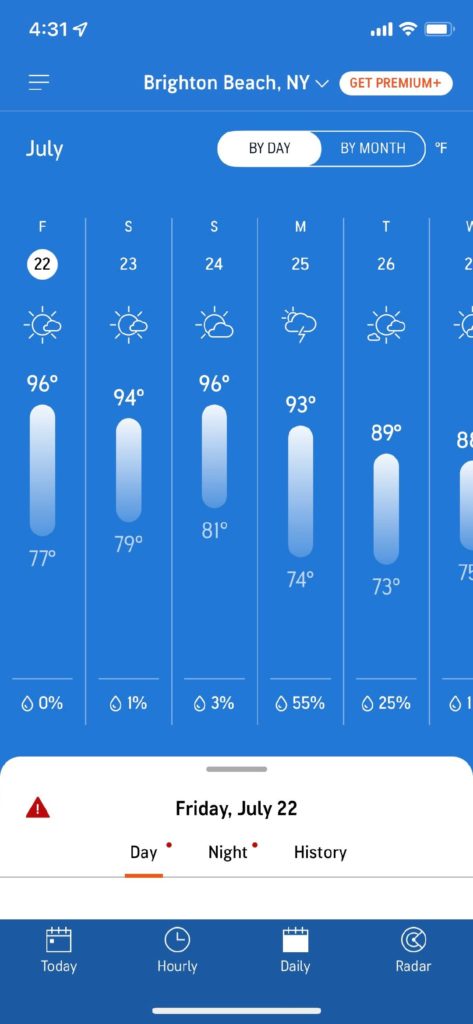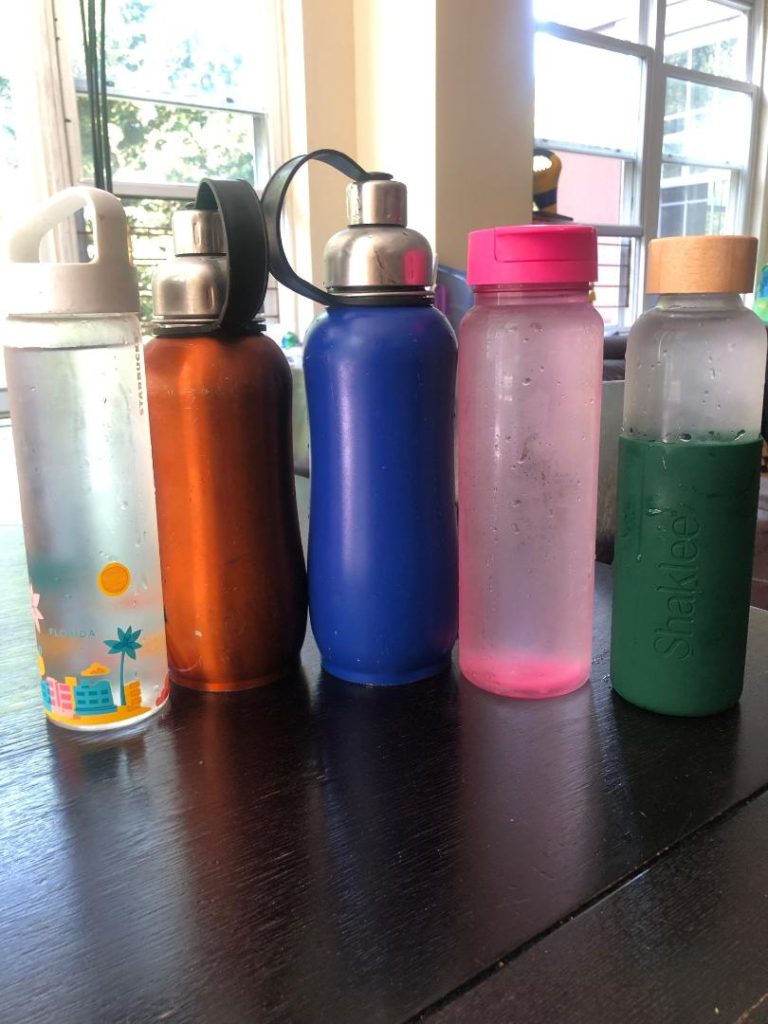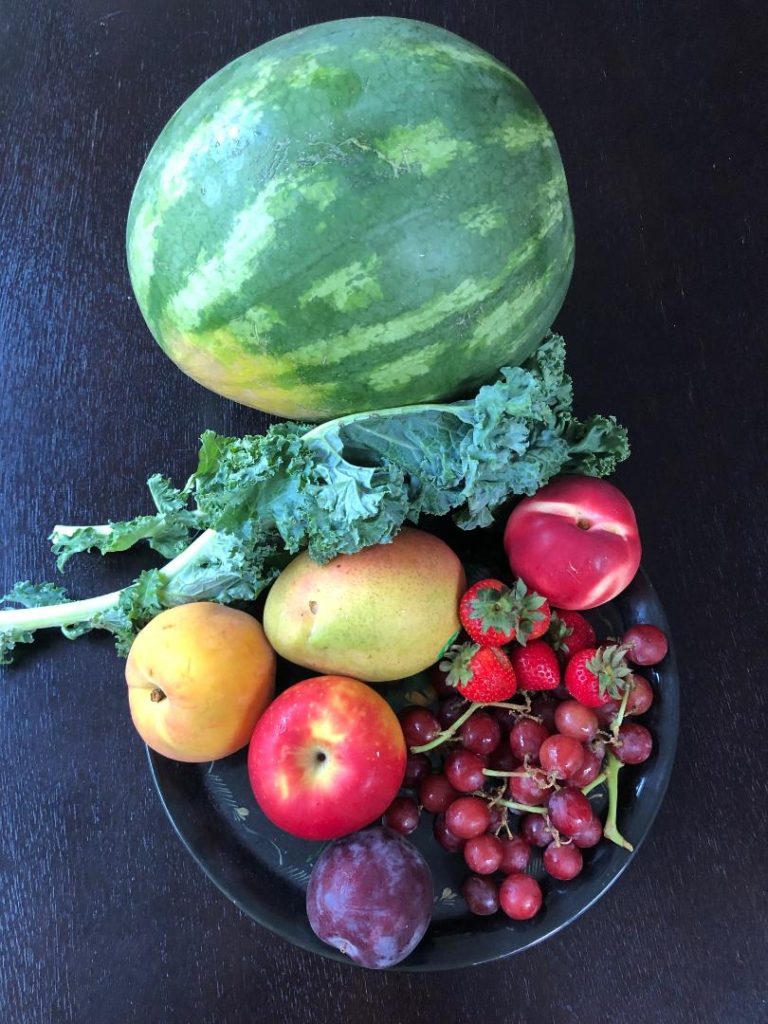I was in the process of finalizing another post but decided to put it on hold and address a more pressing topic relevant to today. As parts of Europe and the United States are experiencing extreme heatwaves, I was inspired to write about proper hydration.
What is a Heatwave?
Heatwaves are defined as extremely hot temperatures, in excess of the norm for the particular region and time period, often accompanied by high humidity. They form as a result of trapped high-pressure air that forces hot air down to the surface and prevents cool air from rising.
Heat waves generally last from a few days to a few weeks with daily temperature readings 9 degrees Fahrenheit or 5 degrees Celsius above the normal. Here is the reading from AccuWeather for my area:

Dangers of Overheating
Heatwaves are very dangerous, especially for the elderly, young, sick, and overweight population, as they can cause a host of problems including:
- Dehydration
- Hyperthermia or heat stroke
- Edema
- Rashes
- Cramps
- Exhaustion
- Mortality
How to Stay Hydrated
Adequate water intake is extremely important to our health. Water is essential for:
- eliminating waste and toxins
- regulating body temperature
- lubricating your joints
- protecting your spinal cord and other sensitive tissues
- transporting nutrients and oxygen to your cells
- dissolving minerals and nutrients for your body to use
During normal temperatures and activity, the US National Academies of Science, Engineering, and Medicine recommends that
- men consume approximately 125 ounces = 15.5 cups = 3.7 liters, daily
- women consume approximately 91 ounces = 11.5 cups = 2.7 liters, daily
When we exercise and sweat, we need to increase water consumption to compensate for the extra lost fluids. Other situations such as breastfeeding, intake of certain medications, smoking, and consumption of alcohol and caffeine warrant additional fluid intake, as well.
During times of extreme heat or excessive sweating, the water intake recommendations are significantly higher. The Center for Disease Control (CDC) recommends that you drink 8 ounces = 1 cup = .2 liters every 15 – 20 minutes.
I also found this interesting formula in an article in The Sun:
- your weight in pounds divided by 2.2
- the result from step above multiplied by your age
- the result from step above divided by 28.3
- the result from above is your daily recommended water consumption in ounces
- Except for, if you are sweating due to exercise or heat, you should add an extra 8 – 16 ounces of water to the total above
Using myself as an example: 140 pounds, 41-year-old female:
- 140/2.2 = 64
- 63,6 x 41 = 2,609
- 2,609 = 92 ounces daily recommended water intake
- 92 + 16 = 108 ounces daily recommended water intake during heat wave

What Else Counts as Water?
If you’re wondering how in the world you will gulp down the recommended quantity of water, don’t worry. Not only drinking water counts as water. Also, 20% of your water intake can come from food. Here are other wonderful ideas and good sources of water:
- Infused water – if plain water does not taste good to you, try adding fruit, vegetables, and herbs for flavoring. Take a large pitcher, add any fruit, vegetables, or herbs of choice, let sit for a few hours and enjoy! Remember to discard any added fruit, vegetables, or herbs from the infused water after 24 hours and enjoy the water for up to 3 days, as long as it’s kept refrigerated. My favorite additives are lemon, lime, cucumber, and mint.
- Herbal tea without caffeine
- Milk (dairy and non-dairy) – just remember whole milk contains calories and fat. Try skim milk as alternative
- Bone broth
- Fruit, vegetables, and greens – (water content slightly varies in different sources and for different varieties of the same fruit/vegetable/green so these percentages are approximations. Please refer to the National Center for Biotechnology Information website for more details) – here is what I found in my fridge:
- watermelons – about 92% water
- strawberries – about 91% water
- peaches – about 89% water
- nectarines – about 89% water
- plums – about 87% water
- apples – about 84% water
- kale – about 84% water
- mangoes – about 83% water
- grapes – about 81% water

Enjoy and stay safe! Let me know what your favorite source of water is in the comments.


